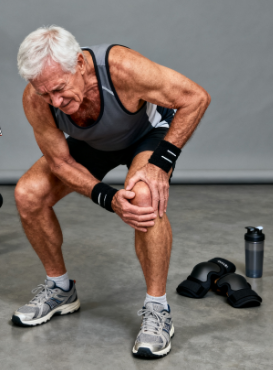
This Popular Workout Move at the Gym Might Be Straining Your…
You see people doing it all the time at the gym, in fitness classes, and in online workout videos. It’s often touted as a fantastic exercise for core strength and stability. The instructor demonstrates it with ease, and the class follows along. You give it a try, determined to stay active and strong. But what if this popular move is secretly placing dangerous strain on one of the most vulnerable parts of your body?
For those of us in our 50s, 60s, and beyond, staying active is one of the keys to a healthy, independent life. However, the exercises that were safe and effective in our 30s may need to be modified as our bodies change. One move, in particular, has become a staple in many fitness routines, yet it poses a significant risk to the aging spine: the traditional sit-up or crunch.
While the intention is to strengthen the abdominal muscles, the way most people perform sit-ups can do more harm than good, specifically straining the neck and the lower back.
The Problem with the Classic Sit-Up
The goal of a core exercise should be to stabilize the spine, not to flex it repeatedly against resistance. Here’s what goes wrong during a typical sit-up:
- The Dangerous Pull on the Neck: To get themselves up, many people, especially when their abdominal muscles are fatigued, lace their fingers behind their head and pull on their neck. This strains the cervical spine (the neck) and can aggravate existing issues like arthritis or pinched nerves. The head is heavy, and yanking it forward places immense stress on the delicate vertebrae and muscles of the neck.
- The Pressure on the Lower Back: The repeated flexion (rounding forward) of the spine during a sit-up presses the abdominal contents downward, creating significant intra-abdominal pressure. This force is transmitted to the lumbar discs—the soft, cushion-like structures between the bones in your lower back. Over time, this repetitive pressure can contribute to disc bulges or herniations, especially in individuals who may already have some age-related disc degeneration.
- It Engages the Wrong Muscles: Ironically, traditional sit-ups primarily work the hip flexors—the muscles that run from your thighs to your lumbar spine—more than they work the deep abdominal muscles. Tight hip flexors can pull on the lower back, creating an anterior pelvic tilt that leads to lower back pain.
A Safer, Smarter Path to a Strong Core
The good news is that you can build a powerful, protective core without ever doing a single sit-up. The goal is stability, not motion. Here are three superior alternatives that are much kinder to your spine:
1. The Dead Bug: The Ultimate Safe Core Stabilizer
This exercise looks silly but is incredibly effective at training your core to stabilize your spine while your arms and legs move.
- How to do it: Lie on your back with your arms extended straight up toward the ceiling and your knees bent at a 90-degree angle over your hips (so your body looks like a “dead bug”). Slowly and with control, lower your right arm and your left leg toward the floor simultaneously. Keep your core braced and your lower back pressed flat against the floor. Return to the start and repeat with the opposite arm and leg.
- Why it’s better: It completely avoids spinal flexion and teaches your deep core muscles to work together to prevent movement in your lower back.
2. The Farmer’s Carry: Real-World Strength
This is one of the most functional and safe exercises you can do.
- How to do it: Simply pick up a moderately heavy dumbbell or kettlebell in each hand. Stand tall with your shoulders back and down. Walk forward for a set distance or time, maintaining perfect posture. Don’t lean to either side.
- Why it’s better: It builds immense core stability as your muscles have to fire to keep your torso upright under load. It also strengthens your grip, shoulders, and posture—all crucial for daily life.
3. The Front Plank: The Static Stabilizer
When done correctly, the plank is a fantastic isometric hold.
- How to do it: Lie on your stomach and prop yourself up on your forearms and toes. Your body should form a straight line from your head to your heels. Engage your glutes and abdominal muscles to prevent your hips from sagging or rising. Hold for 20-30 seconds to start.
- Why it’s better: It trains your entire core—including the deep transverse abdominis—to brace and protect the spine without any repetitive bending.
Staying strong is non-negotiable for healthy aging. But it’s crucial to choose exercises that protect your joints, especially your spine. By swapping out risky moves like the traditional sit-up for safer, more effective alternatives, you’re not just building a stronger core—you’re ensuring that you can continue to enjoy an active, pain-free lifestyle for years to come. Listen to your body, focus on stability, and remember that the smartest workout is the one that keeps you healthy and in the gym, not the one that sends you to the doctor.